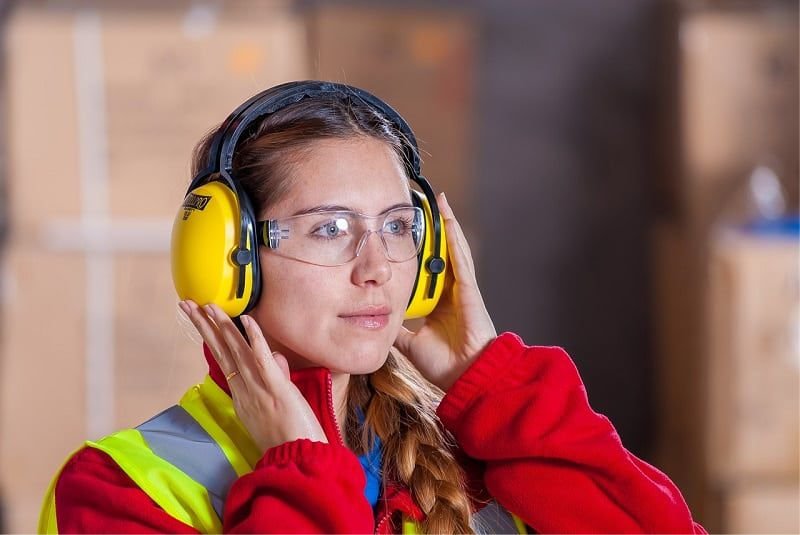Genes and the environment influence human biological variation in visible characteristics, physiology, disease susceptibility, mental abilities, body size, and life span. Though humans vary in many traits (such as genetic predispositions and physical features), humans are among the least genetically diverse primates. Humans are omnivorous, capable of consuming a wide variety of plant and animal material, and have used fire and other forms of heat to prepare and cook food since the time of Homo erectus. Humans are generally diurnal, sleeping on average seven to nine hours per day.
Humans began exhibiting behavioral modernity about 160,000–60,000 years ago. Since then, a number of civilizations have risen and fallen, while a number of sociocultural and technological developments have resulted in significant changes to the human lifestyle. Modern humans continuously innovate and eventually contrived contemporary forms of governments, religions, technologies, medicines, education, industries, and cultures. And as of 2018, the estimated human population worldwide is 7.7 billion. Homo sapiens (the anatomically modern humans) are the only extant species of the genus Homo.
Tools & Food
- The earliest humans climbed trees and walked on the ground.
- Being reckless adolescent apes stranded in an outer band of the Milky Way may not feel as good as the idea of being angels perched at the center of the universe, but here we are, nonetheless.
- History reminds us that every bigot and every evil dictator dies, too.
- In terms of behavior, we are the weirdest and most paradoxical of all Earth’s lifeforms.
- This awareness also brings invaluable perspective that might save some of us from being buried alive under the empty distractions, general nonsense, and false beliefs our societies mass-produce.
- A better grasp of these aspects is useful in understanding how the mind works…
Nevertheless, the human brain has advanced skills in abstract reasoning, articulate language, self-awareness, problem-solving, and sapience. Anatomy and physiology change remarkably between fertilization and birth. After birth, the rate of anatomic and physiologic changes slows, but childhood is still a time of remarkable growth and development (see Physical Growth of Infants and Children). Some anatomic changes occur past adulthood, but the physiologic changes in the body’s cells and organs are what contribute most to what we experience as aging (see page Changes in the Body with Aging). Physiology is the study of how living organisms function.
It attempts to determine the sequences of nucleotide base pairs that make up the DNA of the estimated 20,000 human genes. Humans are regarded as a member of the biological kingdom Animalia (animals). In particular, humans belong to the tribe Hominini of the family Hominidae. Hominidae, in turn, belongs to the order Primates, of class Mammalia (mammals) and then of phylum Chordata (chordates). Chordates are characterized by their possession of a notochord. Within just the past 12,000 years, our species, Homo sapiens, made the transition to producing food and changing our surroundings.
Human
The human body is a complex, highly organized structure made up of unique cells that work together to accomplish the specific functions necessary for sustaining life. Working to get closer to the truth of our origin, composition, connections, and context matters because such knowledge is likely to improve our long-term survival prospects. This awareness also brings invaluable perspective that might save some of us from being buried alive under the empty distractions, general nonsense, and false beliefs our societies mass-produce. Glimpsing humanity—as revealed by science, history, anthropology, and art—is an escape hatch. It can provide precious moments of relief from the mundane, the ridiculous, and the anxiety that comes with being stuck somewhere between Homo erectus and whatever surprises comes next. This tutorial elaborates on the physical development of humans, particularly from puberty to Worldtradex reviews adulthood.
Humans have notochords at one point in their lives, particularly during the embryonic stage. At the fetal stage, the notochord becomes part of the vertebral column (similar to other vertebrates). And by the time of birth, the neonate is brought forth by live birth, and https://worldtradex.blog/ then nourished with breast milk produced from the mother’s mammary glands, which is a major distinguishing characteristic of mammals. From pigments to printing presses, symbols changed the way humans lived and provided new ways to cope with an unpredictable world.
- Just keep in mind that reality doesn’t care about our preferences.
- Humans are also the only species that usually need help from other humans (conspecifics) to mitigate the dangers of birthing.
- Homo sapiens (the anatomically modern humans) are the only extant species of the genus Homo.
- And all of these traits emerged before humans began domesticating plants and animals.
- And as of 2018, the estimated human population worldwide is 7.7 billion.
Table 1: Timeline of Hominid Evolution Before the Emergence of Homo
We are transitory collectives who constantly exchange matter with our environments until we die and have to give back all those borrowed atoms. The brain is a dense forest of neural bushes and branches that are forever breaking and joining to form new electrochemical networks. The present “you” is never the same as the past or future “you” because every human is organic smoke—an atomic cloud in constant flux.
Habitat and population
Thus, human physiology deals specifically with the physiological attributes of the human body at various levels of organization, i.e. from cellular to tissue and ultimately, physiology at the biological system level. Human physiology is important because it imparts an in-depth understanding of the vital processes that.. A total of 46 chromosomes come from the two sets of 23 chromosomes where one set is paternal and the other is maternal. Of the 46 chromosomes, two of them make up the sex chromosomes, i.e. According to the XY sex-determination system in humans and other mammals, a female has two X chromosomes whereas a male has one X chromosome and one Y chromosome.
Human Neurology deals essentially with the nervous system of humans. It also features the various theories put forward by prominent neurologists, such as Sigmund Freud and Carl Jung, and their analogies of the human brain and its inner workings. Objectives To impart information on the nervous system, particularly its cellular and physiological features To be..
Although the term “humans” technically equates with all members of the genus Homo, in common usage it generally refers to Homo sapiens, the only extant member. All other members of the genus Homo, which are now extinct, are known as archaic humans, and the term “modern human” is used to distinguish Homo sapiens from archaic humans. Anatomically modern humans emerged at least 300,000 years ago in Africa, evolving from Homo heidelbergensis or a similar species. Migrating out of Africa, they gradually replaced and interbred with local populations of archaic humans. Multiple hypotheses for the extinction of archaic human species such as Neanderthals include competition, violence, interbreeding with Homo sapiens, or inability to adapt to climate change.
The term man has traditionally referred to humans in general, or humankind. For a philosophical treatment of the subject, see philosophical anthropology. For the physical anthropology of human ancestry, see human evolution. For an examination of human culture, see art; cuisine; dance; government; literature; music; sport. Human being, a culture-bearing primate classified in the genus Homo, especially the species H. Human beings are anatomically similar and related to the great apes but are distinguished by a more highly developed brain and a resultant capacity for articulate speech and abstract reasoning.
Therefore, all great apes are now gathered with humans into Hominidae, and within that family humans and their extinct ancestors are considered to make up the tribe Hominini. After nine months of gestation, the fetus would be fully grown and is set for birth. Unlike in other species, the birthing process in humans is painful and difficult. One of the consequences of bipedalism is a relatively narrow birth canal (pelvis).
Read this tutorial to know the specific physical changes that female and male bodies undergo as they turn into adults… As early humans spread to different environments, they evolved body shapes that helped them survive in hot and cold climates. Part of what it means to be human is how we became human. Over a long period of time, as early humans adapted to a changing world, they evolved certain characteristics that help define our species today. The earliest Homo sapiens was presumed to have emerged about 300,000 years ago. And based on estimates, vocal languages probably developed between 350,000 and 150,000 years ago.
Your reflection in that mirror is richer, fuller, and even more exciting than you ever imagined.
Over time, humans have demonstrated behavioral modernity and advancement. This section of our website focuses on several human characteristics that evolved over the past 6 million years. As you explore the scientific evidence for these characteristics, you will discover that these traits did not emerge all at once or in any one species. For example, early humans began walking upright before they began making tools. A rapid increase in brain size occurred before early humans began using symbols to communicate. And all of these traits emerged before humans began domesticating plants and animals.





